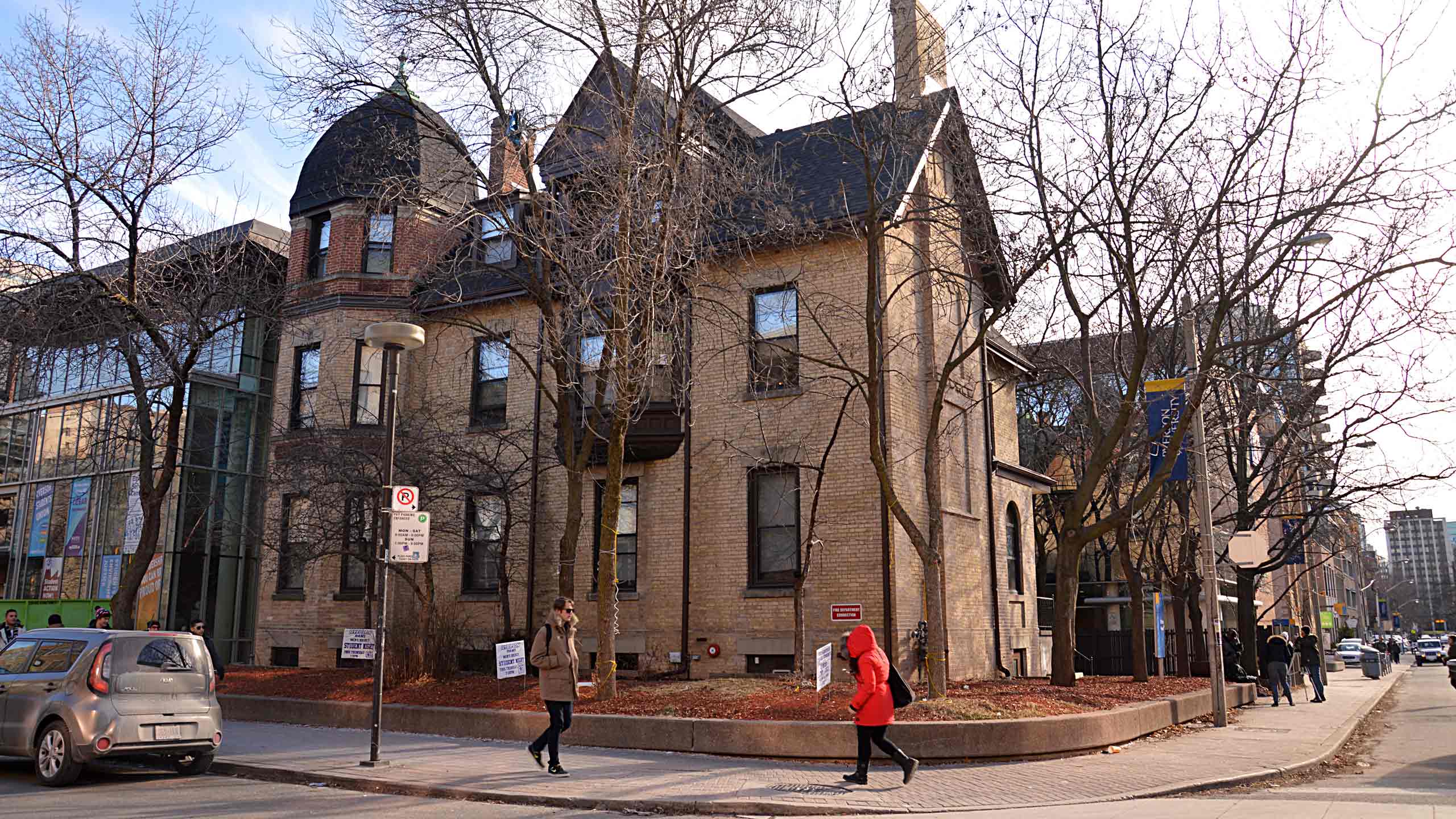By Jacob Dubé
While students were getting ready for their midterms in October 2014, residents of O’Keefe House were hiding in their basement, waiting for the all-clear from Ryerson security. There had just been a bomb threat—the first of many they would receive that year.
Between October and March 2015, the university and a student personally received a total of 10 anonymous threats via email that were all related to O’Keefe and its residents. Though security isn’t investigating the case (despite never making an arrest) and believe the threats were never intended to be carried out, nobody outside of the residence was allowed to know about them.
It started on Oct. 23, 2014. Around 9 p.m., Isabella Perrone, a first-year at the time, was playing ice-breaker games at O’Keefe when Ryerson security showed up and told everyone in the building to go to the basement. All they told her was that there had been a bomb threat, and they had to search the building. Two hours later, they found nothing.
“At the end of it they said, ‘Okay, the house has been searched, there’s no threat, you can go back to your rooms. But you really can’t tell anyone about this’,” said Perrone, now in her third year of journalism. At first, she didn’t tell anyone about what happened because she worried it might interfere with the investigation.
A second message was sent on Oct. 28, and a few days later, Jordan Kilfoy, a third-year computer science student and former house president of O’Keefe, received a threat of his own. The email, sent through a single-use email address that is hard to trace, included death threats addressed to Kilfoy that told him: “You are not safe where you are.”
Between October and March 2015, the university and a student personally received a total of 10 anonymous threats via email that were all related to O’Keefe and its residents.
He thought that the messages were just a bad prank. “But why would someone do that? What were they thinking?” Kilfoy said.
Kilfoy reported the threats to security. They confirmed in an email that the messages were similar to the ones Ryerson had been receiving. They moved Kilfoy out of O’Keefe and into a room in the International Living and Learning Centre residence for two weeks, which they said he had to keep under wraps as well.
“They didn’t want to tell anyone either,” Kilfoy said. “So very few people knew. Only my roommates knew.”
Ryerson’s Integrated Risk Management (IRM), which runs the security offices, with the help of Toronto Police, launched an investigation into the threats, who they were coming from and how credible they might be.
Brian Lesser, chief information officer at Ryerson, said the threats were sent with disposable email addresses that were almost completely untraceable. If a message is sent through Ryerson servers, Lesser and his team are able to know which addresses sent and received it, but not what’s inside.
They’re also able to know who logged onto a server and at what time.
“It’s not a lot, but it can be helpful in an investigation,” Lesser said.
After Ryerson received an increasing number of threats, Perrone said security contacted everyone at O’Keefe and asked to go through their Ryerson emails. She said there was an option to opt out, but doesn’t think anyone did. “Everyone just wanted the whole thing to be over with.”
“They didn’t want to tell anyone either,” Kilfoy said. “So very few people knew. Only my roommates knew.”
Security brought Perrone and her roommate into an interrogation room at their office on Bond Street. Everything was grey, from the walls and floors to the single table with a voice recorder in the middle of it. Security officers introduced themselves to the recording, had Perrone and her roommate consent to the search on record, and proceeded to look through their emails for the next five minutes in silence. After a while, Perrone was told she could go.
According to Tanya Poppleton, manager of security and emergency services at IRM, this case was complicated, and making sure security had all of the records they could was important.
“We were pleased that all community members volunteered to share their emails with us and cooperated fully in the investigation with both us and Toronto Police,” she said.
Poppleton said the case is no longer being actively investigated, and security believes they know who is responsible for the emails. That person has been contacted by Toronto Police, but no arrest has been made.
“While any threat of violence is taken seriously, it does not appear that the threats were ever intended to be carried out,” Poppleton said.
Poppleton said that what security communicates about public safety issues are considered on a case-by-case basis and that “the entire residence community was notified by housing management in December 2014.”
“If there’s any risk to our community, I think it’s at the best interest of Ryerson and the community to be upfront and communicate the information,” said Ryerson president Mohamed Lachemi.
On March 1, bomb threats targeting Muslims caused Concordia University to evacuate three buildings. It was made public right away because threats were also sent to media outlets.
From security’s point of view, it’s over. But Perrone never got the information and closure she wanted. Officers kept telling her not to tell anybody about the threats. When they stopped investigating, she never found out the full story. The email updates to O’Keefe residents stopped and no public security alert was ever put out.
The incidents have stuck with Perrone to this day, and completely changed how she expected her very first year of university, and living away from home, to go.
“Everyone else was like ‘I had a great time, I went to a bunch of parties’,” she said. “And I say: ‘Yeah, my mom called me every single night to make sure I was in my house, and alive.’”










Leave a Reply